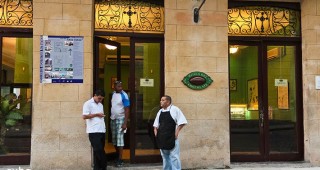 (+53)7644 - 7613
(+53)7644 - 7613Inaugurated in 1984 on the grounds of 11 abandoned farms, with a surface area of 340 hectares, rich plant life and over 130 species of Cuban birds in addition to many other migratory birds, Parque Zoológico Nacional de Cuba is a beautiful forest area and the fifth most visited area for bird watching in Cuba. Additionally, it has over 700 species of animals in open areas that resemble their natural habitat thanks to the varied topography of the area. Buses take visitors around the zoo’s 243 hectares that have been transformed into African prairie land roamed by giraffe, zebra, antelopes, rhinoceros, hippos and lions. There’s also a children’s zoo. In addition to publishing the magazine Cubazoo, featuring articles on the researches carried out here, the park hosts lectures, participation games and talk shows on animal life. The School of Veterinary Medicine of the Agricultural University of Havana has a teaching unit here.
Entrance 1: Ave. de Rancho Boyeros, esq a 243, Fontanar, Boyeros.
Entrance 2: Carretera de Capdevila km 3½, Boyeros (644 7613).
Admission details: CUC 3; CUC 2 concessions (incl optional guide).



 Modern
Modern







